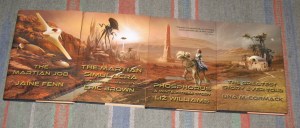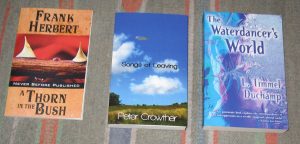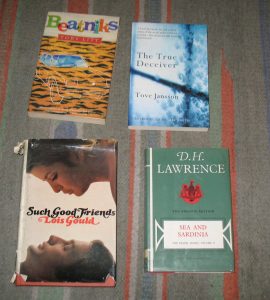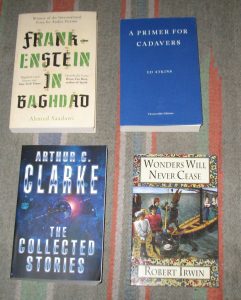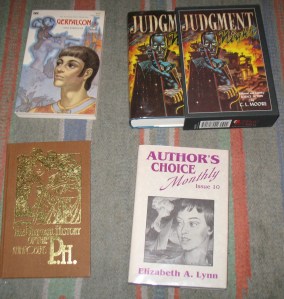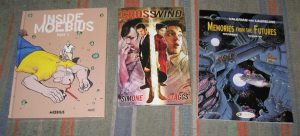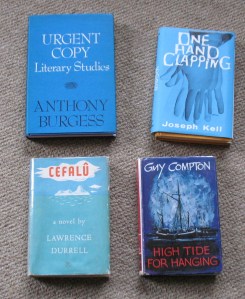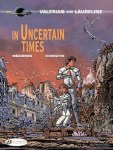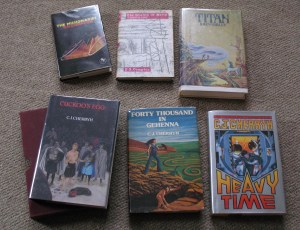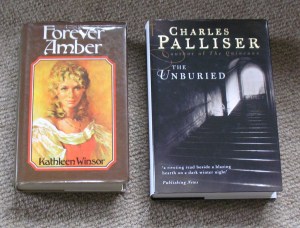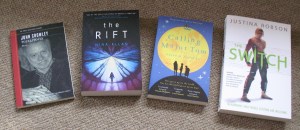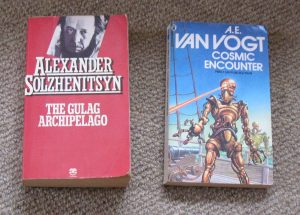The 1990s had seen me expand my reading from purely genre fiction and read more widely within science fiction and fantasy. The former was chiefly from necessity – the only library I had access to possessed a limited genre collection. The latter was due to the members of the APA I was in discussing books that sounded like they were worth reading. The APA packed in shortly after the turn of the millennium, killed by the internet.
And the internet, ironically, made it much easier to purchase the books I wanted to read. No more poring through Andromeda’s monthly mailing catalogue to find interesting new books to buy. Now there was a certain humungous online retailer of books, and eBay for the out-of-print books. (This was not necessarily a good thing.) During the 1990s, I had bought books I wanted to own and read, but after my return to the UK in 2002 I started collecting them. Buying first edition copies, preferably signed, by my favourite authors. I returned to the UK with 45 boxes filled with books, of which around 80% were paperbacks. Over the next ten years, I would end up with five bookcases, double-stacked, of hardback books.
Which brings us to…
The 2000s
 The Forever War, Joe Haldeman (1974). I’m not a fan of this book, or of Haldeman’s work in general, but this novel makes my list because it was the first book published in the SF Masterworks series. And the first book that really turned me into a collector of books. Originally, the SF Masterworks were numbered – although they managed to screw up the numbering… twice – and ran for ten years from 1999 to 2009, ending after 73 books. Naturally, I wanted them all. The series was relaunched in 2010 in a new yellow cover design, this time unnumbered, and with a much expanded list. I have all of the numbered versions – there was a rival Fantasy Masterwork series of 50 books, which I also collected – but have only dipped into the unnumbered series, some of which appeared in the original series anyway.
The Forever War, Joe Haldeman (1974). I’m not a fan of this book, or of Haldeman’s work in general, but this novel makes my list because it was the first book published in the SF Masterworks series. And the first book that really turned me into a collector of books. Originally, the SF Masterworks were numbered – although they managed to screw up the numbering… twice – and ran for ten years from 1999 to 2009, ending after 73 books. Naturally, I wanted them all. The series was relaunched in 2010 in a new yellow cover design, this time unnumbered, and with a much expanded list. I have all of the numbered versions – there was a rival Fantasy Masterwork series of 50 books, which I also collected – but have only dipped into the unnumbered series, some of which appeared in the original series anyway.
 The Mechanics of Wonder, Gary Westfahl (1998). While I had read plenty of science fiction, I had read almost nothing about it. The previously mentioned APA often had discussions about the nature of the genre – there are as many theories of what it is as there are sf critics – which were formative in developing my own theories of science fiction, and where I often tried those theories out on my fellow APA members. The Mechanics of Wonder had a mixed response on publication, but I remember it being one of the first popular critical works on science fiction (rather than academic, that is; or collections of book reviews) I bought and read. I agree with Westfahl that the genre of science fiction as we now understand it was created in 1926 with the publication of the first issue of Amazing Stories… but I’ve pretty much forgotten what else Westfahl had to say in the book.
The Mechanics of Wonder, Gary Westfahl (1998). While I had read plenty of science fiction, I had read almost nothing about it. The previously mentioned APA often had discussions about the nature of the genre – there are as many theories of what it is as there are sf critics – which were formative in developing my own theories of science fiction, and where I often tried those theories out on my fellow APA members. The Mechanics of Wonder had a mixed response on publication, but I remember it being one of the first popular critical works on science fiction (rather than academic, that is; or collections of book reviews) I bought and read. I agree with Westfahl that the genre of science fiction as we now understand it was created in 1926 with the publication of the first issue of Amazing Stories… but I’ve pretty much forgotten what else Westfahl had to say in the book.
 The Eye of the World, Robert Jordan (1990). Back in 2001, I bought the first six or so books of Jordan’s Wheel of Time series from a new bookshop in Abu Dhabi. I wanted to understand why they were so popular. I never did find out. It was the first instance I remember of reading a book (and its sequels) specifically to understand how they worked. They’re badly-written, bloated, and haphazardly plotted. The world-building is a hodge-podge of elements borrowed from other works, although it does seem to develop a character all its own as the series progresses. But it’s a mystery to me how the Wheel of Time ever became a best-seller. For some reason I have yet to work out, this year I decided to reread them all (to be fair, I’d never managed previously to make it to the final few volumes). Amusingly, people who had recommended the books twenty years ago now told me the books were rubbish. I knew that already.
The Eye of the World, Robert Jordan (1990). Back in 2001, I bought the first six or so books of Jordan’s Wheel of Time series from a new bookshop in Abu Dhabi. I wanted to understand why they were so popular. I never did find out. It was the first instance I remember of reading a book (and its sequels) specifically to understand how they worked. They’re badly-written, bloated, and haphazardly plotted. The world-building is a hodge-podge of elements borrowed from other works, although it does seem to develop a character all its own as the series progresses. But it’s a mystery to me how the Wheel of Time ever became a best-seller. For some reason I have yet to work out, this year I decided to reread them all (to be fair, I’d never managed previously to make it to the final few volumes). Amusingly, people who had recommended the books twenty years ago now told me the books were rubbish. I knew that already.
 Watchmen, Alan Moore & Dave Gibbons (1987). British comics tradition, unlike that of the US or France, has always been anthology-based – ie, each issue contains multiple strips, which may be standalone or part of a story spread across multiple issues. As a kid, I’d moved on from Beano and Dandy to war comics such as Warlord and Victory, which were popular then. Then 2000AD appeared, and that was the comic for me (plus Starlord and Tornado, which 2000AD later subsumed). I was never a big fan of US superhero comics, but growing up in the Middle East they were all that was available. The only superhero titles I remember reading from that time were The X-Men and Guardians of the Galaxy, but I undoubtedly read others. I forget where I heard about Watchmen, and, to be honest, until I came to write this post I had thought I’d read it much early than after the millennium… but apparently not. It wasn’t just the main narrative that impressed me, but also that Moore had buttressed it with other narratives: some comic strips, some prose. Watchmen made me look afresh at superhero comics, particularly those published as “graphic novels”. My renewed appreciation of superhero comics did not last long – I gave up on them a second time a few years later. Oh, and for the record, the film adaptation of Watchmen has its flaws, but its ending is superior to the comic’s.
Watchmen, Alan Moore & Dave Gibbons (1987). British comics tradition, unlike that of the US or France, has always been anthology-based – ie, each issue contains multiple strips, which may be standalone or part of a story spread across multiple issues. As a kid, I’d moved on from Beano and Dandy to war comics such as Warlord and Victory, which were popular then. Then 2000AD appeared, and that was the comic for me (plus Starlord and Tornado, which 2000AD later subsumed). I was never a big fan of US superhero comics, but growing up in the Middle East they were all that was available. The only superhero titles I remember reading from that time were The X-Men and Guardians of the Galaxy, but I undoubtedly read others. I forget where I heard about Watchmen, and, to be honest, until I came to write this post I had thought I’d read it much early than after the millennium… but apparently not. It wasn’t just the main narrative that impressed me, but also that Moore had buttressed it with other narratives: some comic strips, some prose. Watchmen made me look afresh at superhero comics, particularly those published as “graphic novels”. My renewed appreciation of superhero comics did not last long – I gave up on them a second time a few years later. Oh, and for the record, the film adaptation of Watchmen has its flaws, but its ending is superior to the comic’s.
 The Incal, Alejandro Jodorowsky & Moebius (1980).
The Incal, Alejandro Jodorowsky & Moebius (1980).
Valérian and Laureline 4: Welcome to Alflolol, Pierre Christin & Jean-Claude Mézières (1972). One of the reasons I turned my back on superhero comics was the new easy availability of French/Belgian bandes dessinées – initially English-language translations published only in the US, but also original French copies, sold on eBay; but then from publisher Cinebooks, who introduced a number of popular and long-running bandes dessinées series to the UK market. Some of these were not new to me. During the 1980s, when flying out to the Middle East for the holidays we would transit through Schiphol Airport, and there I would often buy copies of Heavy Metal, 1984 and Epic magazines. In Abu Dhabi in the 1990s, I stumbled across a few volumes of Valérian and Laureline, as well as individual volumes of the Adventures of Blake and Mortimer, and Yoko Tsuno, all published as one-offs some time in the 1980s. But I didn’t start reading Valérian and Laureline (and Blake and Mortimer) in earnest until Cinebook began publishing them in the mid-2000s. Moebius, of course, I knew from Heavy Metal. Jodorowsky I discovered through his films, probably after hearing of his attempt at adapting Dune, and then learning he had written a highly-regard science fiction bande dessinée. Unlike superhero comics, I still read bandes dessinées, and there are a number of series I follow.
 The Levant Trilogy, Olivia Manning (1977 – 1980). I think I set out to read this book, and its prequel, The Balkan Trilogy, specifically because Manning was in Egypt during World War 2 at the same time as Lawrence Durrell, and both were part of a community of British writers in North Africa. Which is partly where Durrell’s The Alexandria Quartet came from. But I loved both of Manning’s trilogies, and hunted round for more of her fiction. Her books also kindled an interest in British postwar fiction by women writers, and I sought out female authors who had been active between the 1930s and 1960s. It proved to be a larger project than I’d anticipated, and many of the books were long out of print, but I did find some interesting works by the likes of Storm Jameson, Pamela Frankau, Elizabeth Taylor (not the actress) and Susan Ertz, Taylor especially becoming a favourite writer.
The Levant Trilogy, Olivia Manning (1977 – 1980). I think I set out to read this book, and its prequel, The Balkan Trilogy, specifically because Manning was in Egypt during World War 2 at the same time as Lawrence Durrell, and both were part of a community of British writers in North Africa. Which is partly where Durrell’s The Alexandria Quartet came from. But I loved both of Manning’s trilogies, and hunted round for more of her fiction. Her books also kindled an interest in British postwar fiction by women writers, and I sought out female authors who had been active between the 1930s and 1960s. It proved to be a larger project than I’d anticipated, and many of the books were long out of print, but I did find some interesting works by the likes of Storm Jameson, Pamela Frankau, Elizabeth Taylor (not the actress) and Susan Ertz, Taylor especially becoming a favourite writer.
 The Penguin Anthology of Classical Arabic Literature, Robert Irwin (1999). I remember reading this in a hotel in Altrincham. I was in the city for a two-day training course. Despite growing up in the Middle East, I knew very little about early Arab history and culture – although I did know the history of the countries in which I’d lived, Qatar, Oman and the UAE, and to some extent, Saudi Arabia. But I knew nothing about the Abbasids and the Ummayads and so on. The Penguin Anthology of Classical Arabic Literature, originally published as Night and Horses and the Desert, proved fascinating stuff, and triggered an interest in mediaeval Arabic literature.
The Penguin Anthology of Classical Arabic Literature, Robert Irwin (1999). I remember reading this in a hotel in Altrincham. I was in the city for a two-day training course. Despite growing up in the Middle East, I knew very little about early Arab history and culture – although I did know the history of the countries in which I’d lived, Qatar, Oman and the UAE, and to some extent, Saudi Arabia. But I knew nothing about the Abbasids and the Ummayads and so on. The Penguin Anthology of Classical Arabic Literature, originally published as Night and Horses and the Desert, proved fascinating stuff, and triggered an interest in mediaeval Arabic literature.
 Ascent, Jed Mercurio (2007). My father had seen a review of Ascent in a newspaper and mentioned the book in passing. I found a review in another paper and, yes, it seemed very much a book I wanted to read. But then I promptly forgot about it… until a visit to Waterstone’s some months later where I saw piles of Ascent on one of the tables just inside the doors. I bought it, I read it, and I fell in love with the detail-oriented prose. I wanted to write like that. And Ascent did indeed become a touchstone work when I was writing the Apollo Quartet. It’s hard to overstate how much it inspired my writing of those books. I’ve kept an eye open for works by Mercurio ever since, although these days he’s better known for his TV work than his novels. I can certainly recommend An American Adulterer, but Bodies was a bit too gruesome for me (and I’m unlikely to ever watch the TV series). I’m eagerly awaiting more fiction from Mercurio, but meanwhile we have his Line of Duty TV series, which has proven to be one of the best thriller series on British television in recent years.
Ascent, Jed Mercurio (2007). My father had seen a review of Ascent in a newspaper and mentioned the book in passing. I found a review in another paper and, yes, it seemed very much a book I wanted to read. But then I promptly forgot about it… until a visit to Waterstone’s some months later where I saw piles of Ascent on one of the tables just inside the doors. I bought it, I read it, and I fell in love with the detail-oriented prose. I wanted to write like that. And Ascent did indeed become a touchstone work when I was writing the Apollo Quartet. It’s hard to overstate how much it inspired my writing of those books. I’ve kept an eye open for works by Mercurio ever since, although these days he’s better known for his TV work than his novels. I can certainly recommend An American Adulterer, but Bodies was a bit too gruesome for me (and I’m unlikely to ever watch the TV series). I’m eagerly awaiting more fiction from Mercurio, but meanwhile we have his Line of Duty TV series, which has proven to be one of the best thriller series on British television in recent years.
 Moondust, Andrew Smith (2005). I don’t actually remember the Moon landings – I was only six when Apollo 17 landed in the Taurus-Littrow valley. I do, however, recall watching on television the ASTP orbital rendezvous in 1975. I forget why I read Moondust, possibly a copy I found in a charity shop. I’d bought a couple of the Apogee mission reports several years before after finding them in an Abu Dhabi bookshop, and was fascinated by the engineering involved in the Moon landings. But Moondust deepened my interest – so much so I started hunting for astronaut autobiographies and other books about the US space programme. I call these “enthusiasms”, an interest that takes you over so much you build up an extensive library on the subject. I even went so far as to start up a website, A Space About Books About Space, where I reviewed the books on the topic I read. Sadly, the site has been moribund since 2013. I really should start contributing to it again, but all my books are now in storage. The books I bought, incidentally, proved extremely useful when writing the Apollo Quartet.
Moondust, Andrew Smith (2005). I don’t actually remember the Moon landings – I was only six when Apollo 17 landed in the Taurus-Littrow valley. I do, however, recall watching on television the ASTP orbital rendezvous in 1975. I forget why I read Moondust, possibly a copy I found in a charity shop. I’d bought a couple of the Apogee mission reports several years before after finding them in an Abu Dhabi bookshop, and was fascinated by the engineering involved in the Moon landings. But Moondust deepened my interest – so much so I started hunting for astronaut autobiographies and other books about the US space programme. I call these “enthusiasms”, an interest that takes you over so much you build up an extensive library on the subject. I even went so far as to start up a website, A Space About Books About Space, where I reviewed the books on the topic I read. Sadly, the site has been moribund since 2013. I really should start contributing to it again, but all my books are now in storage. The books I bought, incidentally, proved extremely useful when writing the Apollo Quartet.
 Alanya to Alanya, L Timmel Duchamp (2005). I became aware of Duchamp’s Aqueduct Press, an explicitly feminist genre small press based in the US, when it published Gwyneth Jones’s Life. I think the first three books of Duchamp’s Marq’ssan Cycle were on sale, and they sounded interesting, so I ordered them. I read the first book and thought it was good. But it wasn’t until I had all five books that I read the rest – in fact, I reread Alanya to Alanya and then worked my way through the sequels. It is among the best first contact science fiction ever published. Elizabeth Weatherall is one of the genre’s great characters. The Marq’ssan Cycle made me a fan of Duchamp’s writing as well as her Aqueduct Press, and now I now buy her books as soon as they are published. Her work has also impacted how I read other science fiction works, due to its explicitly feminist approach, particularly those by female sf authors of the 1940s to the 1980s.
Alanya to Alanya, L Timmel Duchamp (2005). I became aware of Duchamp’s Aqueduct Press, an explicitly feminist genre small press based in the US, when it published Gwyneth Jones’s Life. I think the first three books of Duchamp’s Marq’ssan Cycle were on sale, and they sounded interesting, so I ordered them. I read the first book and thought it was good. But it wasn’t until I had all five books that I read the rest – in fact, I reread Alanya to Alanya and then worked my way through the sequels. It is among the best first contact science fiction ever published. Elizabeth Weatherall is one of the genre’s great characters. The Marq’ssan Cycle made me a fan of Duchamp’s writing as well as her Aqueduct Press, and now I now buy her books as soon as they are published. Her work has also impacted how I read other science fiction works, due to its explicitly feminist approach, particularly those by female sf authors of the 1940s to the 1980s.
 Poems, John Jarmain (1945). At one point in the decade, I frequented the Interzone forum online, and somehow or other found myself spending most of my time in its poetry forum. I’d been a fan of Wilfred Owen and his poetry since the early 1990s, had read several biographies of him, and could even quote two or three poems from memory. I had also explored other poetry of the Great War. The Durrell connection to Olivia Manning had led to an exploration of the Salamander and Personal Landscape groups of writers and poets based in North Africa during World War II. Which included John Jarmain. I tracked down a copy of his poetry collection, and even his sole novel, Priddy Barrows. He was killed in France in 1944. Neither of his books made it past their first printing – and copies of Priddy Barrows now go for around £200 – and he was mostly forgotten, until the publication of a book about him in 2012. Jarmain – and the Interzone forum – kicked off an interest in poetry, particularly that of the 1930s and 1940s, and I bought several anthologies published during that period – one even included a review slip – and discovered several poets who became favourites, such as Bernard Spencer and Terence Tiller.
Poems, John Jarmain (1945). At one point in the decade, I frequented the Interzone forum online, and somehow or other found myself spending most of my time in its poetry forum. I’d been a fan of Wilfred Owen and his poetry since the early 1990s, had read several biographies of him, and could even quote two or three poems from memory. I had also explored other poetry of the Great War. The Durrell connection to Olivia Manning had led to an exploration of the Salamander and Personal Landscape groups of writers and poets based in North Africa during World War II. Which included John Jarmain. I tracked down a copy of his poetry collection, and even his sole novel, Priddy Barrows. He was killed in France in 1944. Neither of his books made it past their first printing – and copies of Priddy Barrows now go for around £200 – and he was mostly forgotten, until the publication of a book about him in 2012. Jarmain – and the Interzone forum – kicked off an interest in poetry, particularly that of the 1930s and 1940s, and I bought several anthologies published during that period – one even included a review slip – and discovered several poets who became favourites, such as Bernard Spencer and Terence Tiller.
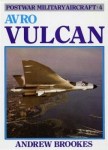 Postwar Military Aircraft 4: Avro Vulcan, Andrew Brookes (1985). I forget what triggered it – perhaps it was a rewatch of the film Strategic Air Command, starring Jimmy Stewart – but in the late 2000s, I decided I wanted to read about jet bombers, especially Cold War ones; and this became another “enthusiasm”. Postwar Military Aircraft 4: Avro Vulcan was the first book on the subject I read (and I eventually picked up copies of all seven books in the series). I remembered the Avro Vulcan from my childhood and teen years, and I’d always thought it a fascinating aircraft. Over several years, I bought lots of books on various fighters and bombers from US, USSR and UK. Although not as long-lived an enthusiasm as my space one – and I never did really get to use Cold War supersonic bombers in my fiction writing, despite the joke coining of a new subgenre, jetpunk – I still ended up buying far too many books on the topic. A lot of them I had to get rid of when I moved.
Postwar Military Aircraft 4: Avro Vulcan, Andrew Brookes (1985). I forget what triggered it – perhaps it was a rewatch of the film Strategic Air Command, starring Jimmy Stewart – but in the late 2000s, I decided I wanted to read about jet bombers, especially Cold War ones; and this became another “enthusiasm”. Postwar Military Aircraft 4: Avro Vulcan was the first book on the subject I read (and I eventually picked up copies of all seven books in the series). I remembered the Avro Vulcan from my childhood and teen years, and I’d always thought it a fascinating aircraft. Over several years, I bought lots of books on various fighters and bombers from US, USSR and UK. Although not as long-lived an enthusiasm as my space one – and I never did really get to use Cold War supersonic bombers in my fiction writing, despite the joke coining of a new subgenre, jetpunk – I still ended up buying far too many books on the topic. A lot of them I had to get rid of when I moved.
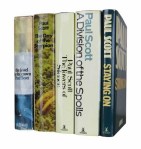 The Raj Quartet, Paul Scott (1966 – 1975). Like pretty much every Brit of my age, I had seen The Jewel in the Crown television series back in the early 1980s, and was aware it was an adaptation of a series of books. I stumbled across paperback copies one day in a charity shop – 69p each, buy one get one free; so I got the full quartet for the princely sum of £1.38. As soon as I started reading the books, I loved them. Scott’s control of voice was amazing, and Barbara Batchelor is one of British Postwar fiction’s greatest characters. As someone who had grown up in the Middle East, the books spoke to me in other ways as well. I immediately started collecting Scott’s books, and even tracked down copies of his earlier works, most of which are long out of print.
The Raj Quartet, Paul Scott (1966 – 1975). Like pretty much every Brit of my age, I had seen The Jewel in the Crown television series back in the early 1980s, and was aware it was an adaptation of a series of books. I stumbled across paperback copies one day in a charity shop – 69p each, buy one get one free; so I got the full quartet for the princely sum of £1.38. As soon as I started reading the books, I loved them. Scott’s control of voice was amazing, and Barbara Batchelor is one of British Postwar fiction’s greatest characters. As someone who had grown up in the Middle East, the books spoke to me in other ways as well. I immediately started collecting Scott’s books, and even tracked down copies of his earlier works, most of which are long out of print.
 The Stainless Steel Rat, Harry Harrison (1961). I first read this back in the early 1980s. I suspect I bought the book in the school bookshop mentioned in an earlier post. But in 2009, I set myself a reading challenge: to reread science fiction novels I’d loved as a teenager. And I had loved The Stainless Steel Rat – and, in fact, had bought and read the series throughout the 1980s – but, oh dear, the reread did not go well. I absolutely hated the book. It was piss-poor science fiction – you could have moved the plot to the 1960s, with only superficial changes needed – and the treatment of the villain, Angelina, was hugely offensive. I purged my bookshelves of all my Harry Harrison novels. Just because you loved a book as a teen, that does not make it a good book or worth recommending to other people. Reread the book. If you still like and admire it, fair enough. You probably won’t, though. They say the Golden Age of science fiction is thirteen, but my reread of The Stainless Steel Rat, and some of the other books in that same reading challenge, brought that aphorism rudely home.
The Stainless Steel Rat, Harry Harrison (1961). I first read this back in the early 1980s. I suspect I bought the book in the school bookshop mentioned in an earlier post. But in 2009, I set myself a reading challenge: to reread science fiction novels I’d loved as a teenager. And I had loved The Stainless Steel Rat – and, in fact, had bought and read the series throughout the 1980s – but, oh dear, the reread did not go well. I absolutely hated the book. It was piss-poor science fiction – you could have moved the plot to the 1960s, with only superficial changes needed – and the treatment of the villain, Angelina, was hugely offensive. I purged my bookshelves of all my Harry Harrison novels. Just because you loved a book as a teen, that does not make it a good book or worth recommending to other people. Reread the book. If you still like and admire it, fair enough. You probably won’t, though. They say the Golden Age of science fiction is thirteen, but my reread of The Stainless Steel Rat, and some of the other books in that same reading challenge, brought that aphorism rudely home.
 First Man: The Life of Neil A Armstrong, James R Hansen (2005)
First Man: The Life of Neil A Armstrong, James R Hansen (2005)
Carrying the Fire, Michael Collins (1974)
Return to Earth, Buzz Aldrin (1973). This year is the fiftieth anniversary of the Apollo 11 Moon landings, but back in 2009, as part of the fortieth anniversary celebrations, I decided to read the autobiographies – biography in Armstrong’s case – of the three Apollo 11 astronauts and review them on my A Space About Books About Space blog. Which I did. But I also wanted to write an alternate history story about the Apollo programme as part of my blog’s celebration. Unfortunately, I got stuck about 500 words in, and failed to finish it in time for the anniversary. Several months later, the writing group I was in put on a flash fiction competition and it occurred to me my alternate Apollo might work better as flash fiction. It did. I banged out an additional 500 words, titled the story ‘The Old Man of the Sea of Dreams’, and published it on A Space About Books About Space here. I had enjoyed the process of researching and writing the story so much I wanted to try something similar at a longer length… and that’s where Adrift on the Sea of Rains, and the Apollo Quartet, came from. I would subsequently read many more books on space exploration over the next few years as research for my writing.

